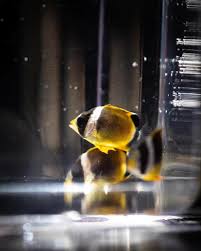
The prevalence of obesity in cats is a growing concern for pet owners. In this article, we delve into the world of tools designed to control and reduce obesity in cats, exploring the experiences and effectiveness of these aids in promoting a healthier and more active lifestyle for our feline friends.
### **1. The Weighty Issue of Feline Obesity**
Feline obesity can lead to a myriad of health issues, including diabetes, joint problems, and a reduced lifespan. Addressing this concern requires a multifaceted approach, including dietary changes, increased physical activity, and the integration of specialized tools designed to aid in weight control.
### **2. Portion Control Feeders: A Smart Solution**
Portion control feeders are innovative tools that help regulate a cat’s food intake by dispensing predetermined portions at scheduled times. These feeders not only prevent overeating but also promote a more structured feeding routine. The experience for cats is seamless, and the gradual reduction in portion size supports gradual weight loss.
### **3. Interactive Food Dispensers: Playful Weight Management**
Interactive food dispensers turn mealtime into an engaging and active experience for cats. These toys dispense small amounts of food as the cat plays, encouraging physical activity and mental stimulation. This not only aids in weight control but also addresses boredom and promotes a healthier lifestyle.
### **4. Weight Loss Diets: Tailored Nutrition**
Specialized weight loss diets formulated for cats play a crucial role in combating obesity. These diets are designed to provide the necessary nutrients while managing calorie intake. They often incorporate higher protein levels to support lean muscle mass and are best implemented under the guidance of a veterinarian.
### **5. Laser Toys: Exercise in a Beam of Light**
Laser toys offer a fun and interactive way to engage your cat in physical activity. The unpredictable movement of the laser beam keeps cats on their toes, encouraging them to run, jump, and play. This type of exercise contributes to calorie burning and is particularly beneficial for indoor cats with limited space.
### **6. Cat Exercise Wheels: Indoor Fitness Made Fun**
Cat exercise wheels provide a controlled environment for cats to engage in physical activity. These wheels are designed to accommodate a cat’s natural instinct to run, allowing them to expend energy and maintain a healthy weight. Some wheels come equipped with incentives like treats to motivate cats to stay active.
### **7. Veterinary Consultation: Tailoring Solutions to Individual Needs**
Before implementing any weight control tools or diets, consulting with a veterinarian is crucial. A veterinarian can assess your cat’s overall health, recommend appropriate weight loss strategies, and monitor progress. Individualized plans ensure that weight management is approached with your cat’s unique needs in mind.
### **8. Gradual Progress and Patience**
Weight control in cats is a gradual process that requires patience and consistency. Implementing tools and strategies should be done with a focus on long-term health rather than rapid results. Regular monitoring, adjustments to the plan as needed, and a supportive environment contribute to sustained success.
### **Conclusion: Paving the Way to a Healthier, Happier Cat**
Controlling and reducing obesity in cats is a shared journey between pet owners and their feline companions. By incorporating specialized tools, dietary changes, and a commitment to increased physical activity, you can pave the way to a healthier and happier cat. The experiences and effectiveness of these tools not only combat obesity but also enhance the overall well-being of your beloved feline friend.










